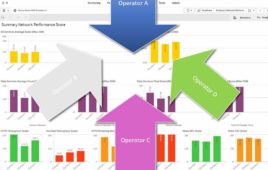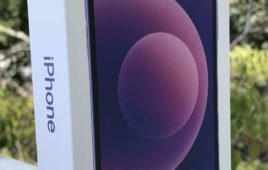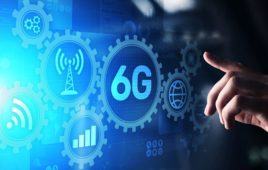Sprint said today it fell further into the red last quarter as the accelerated shutdown of its aging iDEN network pushed up expenses and caused customers to leave for other providers.
The closure of the aging push-to-talk service is a key part of a turnaround plan that has Sprint rolling out LTE, modernizing its 3G infrastructure and replacing iDEN with a CDMA-based product.
The company sped up the decommissioning of the iDEN network over the past few months, shuttering the 9,600 cell sites it planned for closure by the end of the second quarter, sooner than its previous plan to take the sites off-air by the end of the third quarter.
The decision could allow Sprint to move more aggressively on LTE, but it increased iDEN customer defections to other carriers and moved costs it expects to incur in the coming months into the second quarter. The depreciation of its iDEN assets and a write-down on Clearwire accounted for a $782 million impairment charge.
The expense contributed to worsening losses, which widened 62 percent to $1.37 billion on sales of $8.84 billion.
No additional “thinning” of the iDEN platform is expected this year, network operations executive Steve Elfman said during Sprint’s earnings call today. The remaining iDEN infrastructure is being recalibrated to support its current customer base of 4.4 million, a fraction of the 26 million customers it was originally built to support. Sprint is moving aggressively to retain its iDEN customers, which have been a source of subscriber growth for its competitors in recent years.
“The 2G iDEN platform has been a source of customers for other providers… particularly Verizon,” CEO Dan Hesse said during the call.
Historically, Verizon got nearly half of Sprint’s outgoing iDEN customers, while AT&T snagged 20 percent and T-Mobile USA got 5 percent, he said.
In the past, Sprint had often only been able to retain about one-quarter of iDEN customers. It bucked that trend last quarter, when it moved 60 percent of customers leaving the iDEN platform onto its 3G network. That recapture rate is set to lower to 40 percent in the coming months.
Even as Sprint is drawing its ill-fated merger with Nextel to a close, the source of the iDEN woes, it is working to roll out an LTE network that will make its services more competitive with those offered by larger rivals AT&T and Verizon Wireless. It is rolling out new multi-mode base stations that support technologies including CDMA and LTE, and upgrading its backhaul network. It currently has more than 2,000 of the base stations on air, and is aiming to have 12,000 of the sites live by the end of the year.
Sprint has offered a “4G” service for years through Clearwire’s WiMAX network, but the service has a limited footprint and its device selection is already being left behind by the burgeoning LTE ecosystem. Sprint is Clearwire’s largest shareholder, and it was forced to take a write down last quarter as its bet on the WiMAX provider lost value. Sprint plans to eventually stop using WiMAX smartphones, but will eventually use Clearwire’s still-unbuilt LTE network to supplement the capacity of its own service.
Sprint said today it will soon launch its LTE network in four additional markets, bringing the total number of cities covered by the service to about 20.
The iPhone is also part of Sprint’s turnaround effort. After a quarter that saw quarter-over-quarter iPhone sales slowdown at both AT&T and Verizon, Sprint’s held steady over last quarter. It activated 1.5 million iPhones during the second quarter, the same as its first quarter numbers. About 40 percent of the iPhones were sold to new customers, versus existing customers upgrading to the device.
CEO Dan Hesse attributed the iPhone sales numbers to the fact that Sprint still offers the smartphone with an unlimited plan, unlike AT&T and Verizon. He did not disclose how many of the iPhone sales stemmed from Sprint prepaid brand Virgin Mobile USA, which recently began selling the iPhone on a prepaid basis.
Sprint’s $15 billion bet on the iPhone is starting to show signs of paying off, Hesse said.
“We are beginning to see benefits from the iPhone including lower support costs and product service and repair,” he said, adding that Sprint’s iPhone customers also have lower churn rates than its other customers. “We are ahead of the pace to meet our contracted commitments to Apple.”
Sprint managed to add 283,000 net new customers last quarter even as defections from its iDEN platform continued to drag on its subscriber numbers. It added 1.28 million new postpaid, prepaid and wholesale customers on the Sprint brand, gains that were offset by the loss of 998,000 iDEN customers. Its subscriber base now stands at about 56.4 million, up from 52 million last year.
Churn for Sprint’s non-iDEN postpaid customers dipped to 1.69 percent, while prepaid churn came in at 3.16 percent. Total postpaid ARPU rose significantly to $60.88, from $56.67 last year. Prepaid ARPU declined slightly to $26.59, from $27.53 last year.




